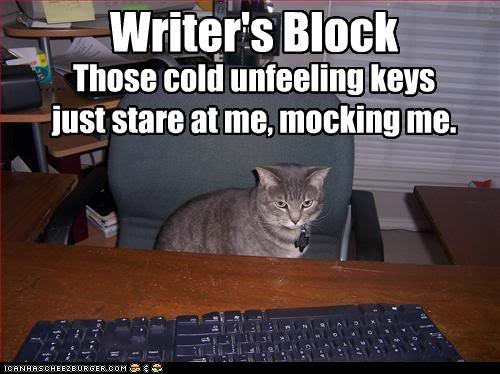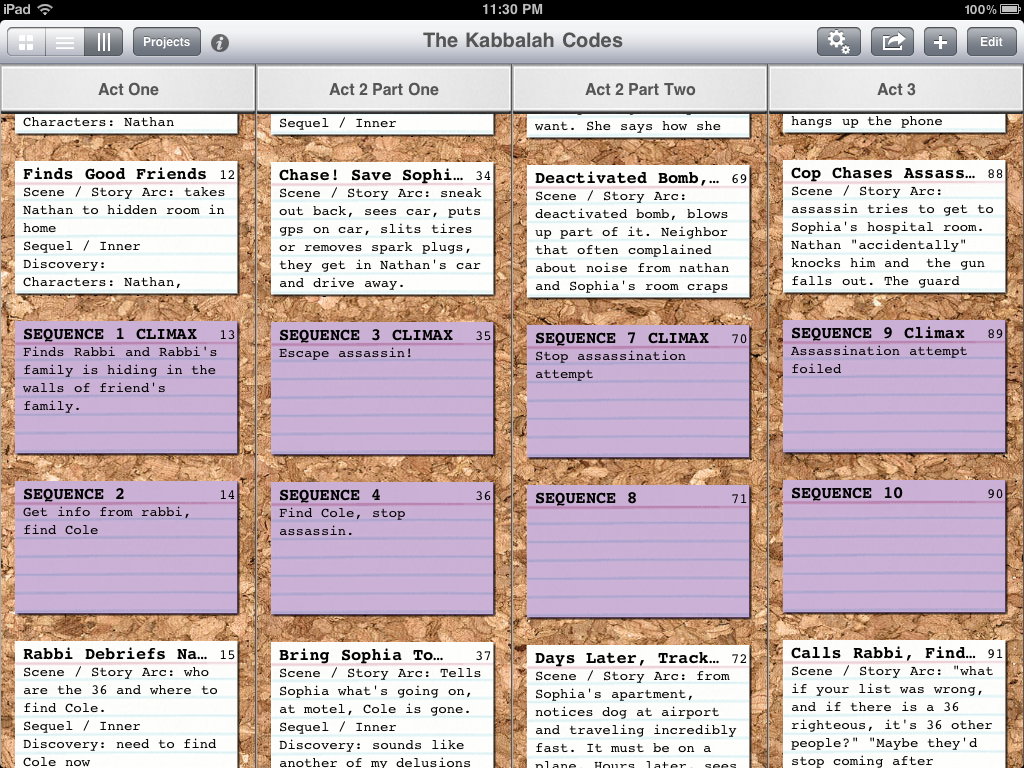How I Write a Page-Turning Plot
 When my thriller The Torah Codes gets a review, the reviewer almost always says the novel is a page-turner. One of my favorite reviews said, “the pages seem to turn themselves.” I use a specific method for coming up with a page-turning plot. Here is how I do it.
When my thriller The Torah Codes gets a review, the reviewer almost always says the novel is a page-turner. One of my favorite reviews said, “the pages seem to turn themselves.” I use a specific method for coming up with a page-turning plot. Here is how I do it.
In high school, I had a music teacher who said, “If you don’t know what to write, start by putting in the bar lines. As you put in those bar lines, ideas will come up for what can go where.”
The same is true for writing a plot. But instead of dividing staves of music into individual measure with bar lines, I use index cards. Each white index card is a scene, each blue card is a sequence divider, each brown card is an act divider. I end up with four act dividers (Act One, Act Two part 1, Act Two part 2, Act Three). I also have two to four sequence dividers per act, and about four scenes per sequence.
Lately I use an iPad app called “Index Card.” Here’s what the layout for my sequel to The Torah Codes look like in columns.
And I also add a blue card to show the climax of a sequence like so.
Once I know all the climax moments of the story, I can fill in the scenes to take me from one climax to the next. I use the front of the white index cards to fill in things like what happens in the scene, who are the characters, whose POV is it, etc. To make sure my scenes are suspenseful, I always ask myself, “What’s the worst that can happen to my characters?” Another writer I know says he paints his characters in a corner just to see how they’ll get out.
And on the back I make a note of what’s being said, what’s not being said (the subtext), the weather and setting information.
Once I complete all the cards, I’m pretty much done. I look at the cards in column view and make sure the pacing is good with an even spread of tension and restful reflection. I don’t want a bunch of tense scenes followed by a bunch of slow scenes, and reviewing the scenes this way makes it easy for me to see the trouble spots.
Now I know exactly what my story’s about, what scene comes when, and I can write with the confidence that the plot is suspenseful.
***
 Book marketing mentor, Ezra Barany is the author of the award-winning bestseller, The Torah Codes. Contact Ezra today to begin the conversation on how he can help you now via Facebook, Twitter, or contact him through this blog, or email: EZRA at THETORAHCODES dot COM.
Book marketing mentor, Ezra Barany is the author of the award-winning bestseller, The Torah Codes. Contact Ezra today to begin the conversation on how he can help you now via Facebook, Twitter, or contact him through this blog, or email: EZRA at THETORAHCODES dot COM.








Really interesting method here. I’m a pantser but I’m trying to work with an outline for my next novel. Think I might try this index card method.
Thanks for a great post! 🙂